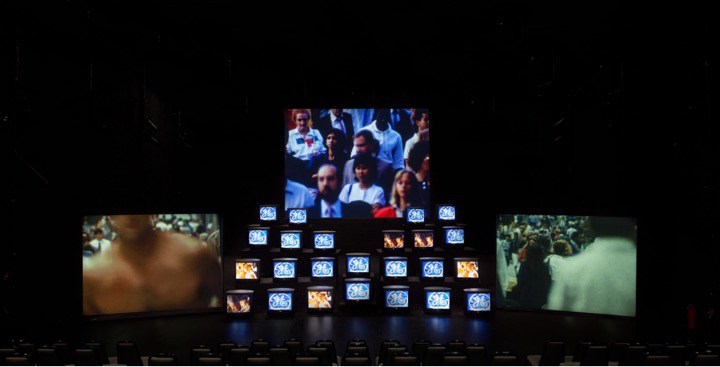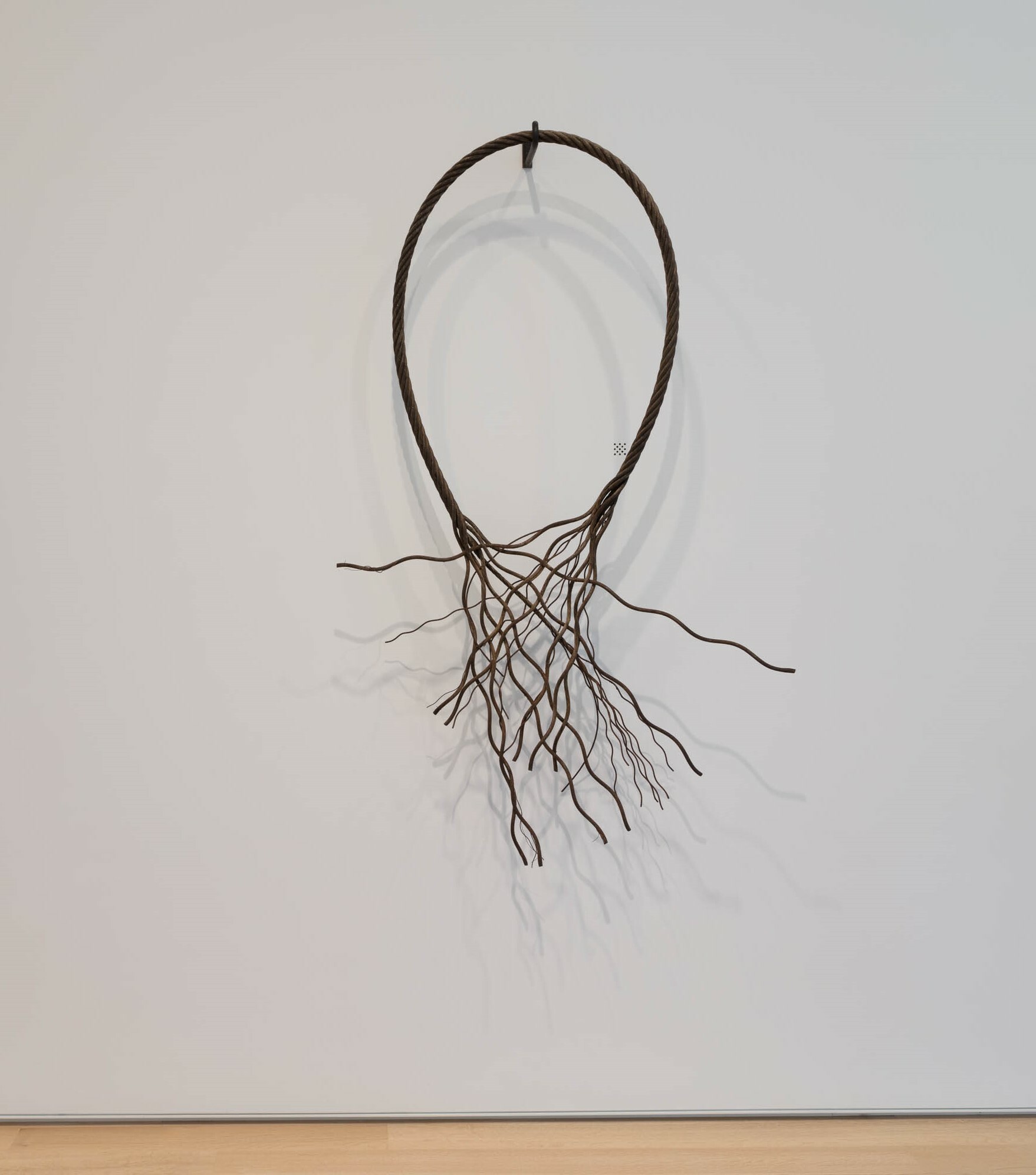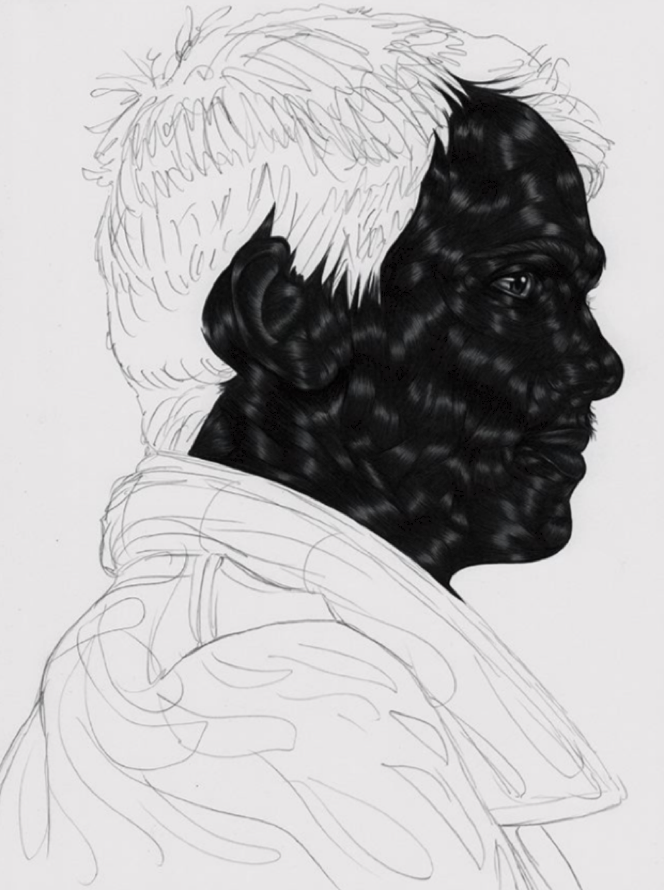Maren Hassinger began taking dance classes even before she started formal schooling. While she was at Bennington College, her interest in dance and choreography shifted to a focus on sculpture informed by her prior exploration of movement and an object’s relationship to space.
Hassinger was among the first class of students to graduate from the fiber arts MFA program at the University of California in Los Angeles. During that time she began working with wire rope, which she described as “open to innovation.” She combined steel cable with tree branches to create sculptures that, in her words, “resembled living, breathing things.” By juxtaposing these materials, Hassinger sought to maintain a balance between the natural and the made, between fragility and strength—and also to express equality, by joining the sculpture’s opposing ends.
Hassinger collected the material for Interlock in a salvage yard on Alameda Street in Los Angeles. As is characteristic of Hassinger’s early wire-rope sculptures, Interlock visibly reflects the process of its production; the artist combined the found materials with industrially produced elements, revealing the tension between technology and nature. This work is also a key example of how Hassinger uses bodily movement to make artistic production possible and distinctive. Scaled to her own body, Interlock shows how Hassinger’s sculptural practice is rooted in her dance and performance background, collapsing these genres into the physical space in and around the work.


